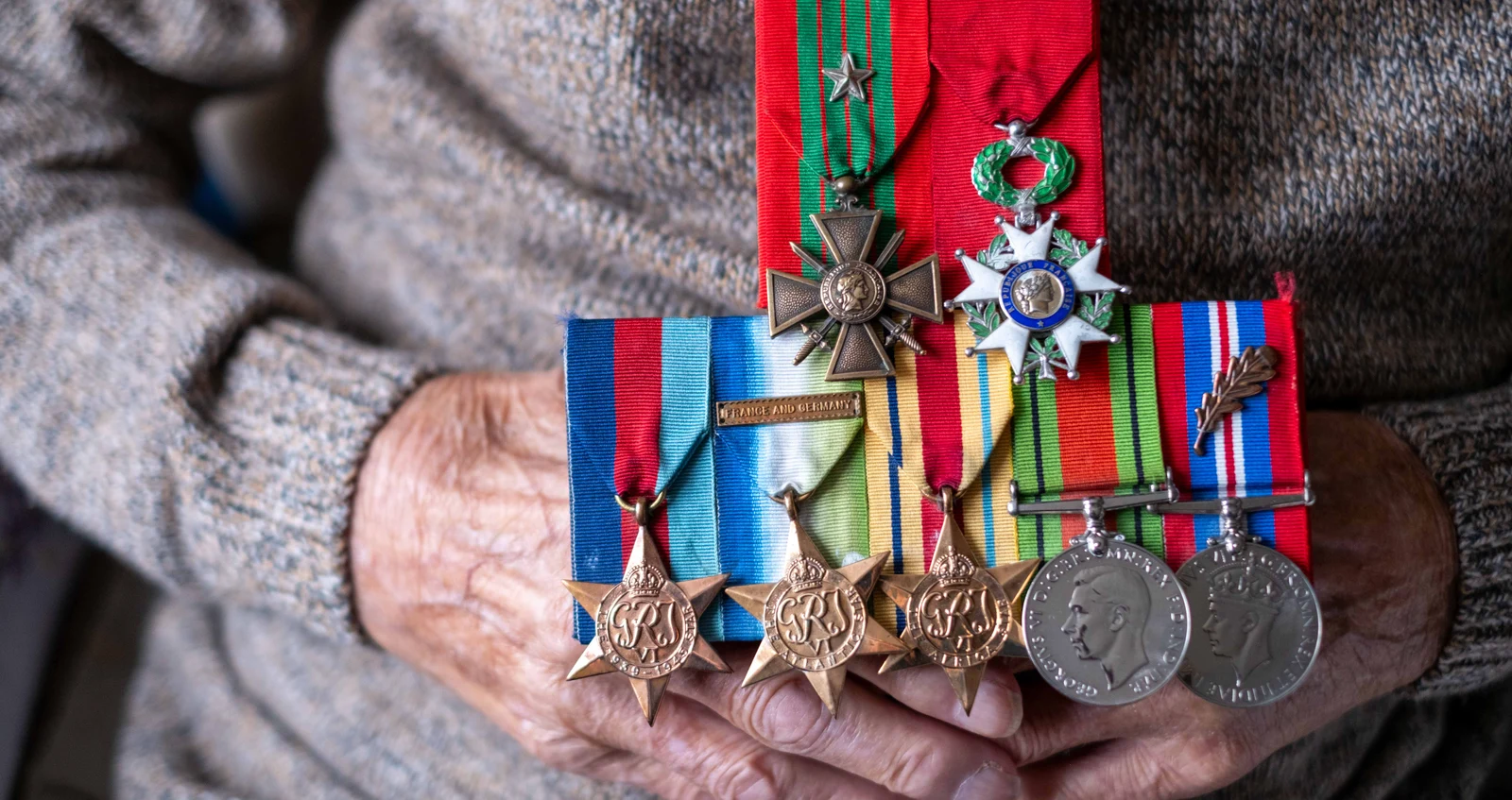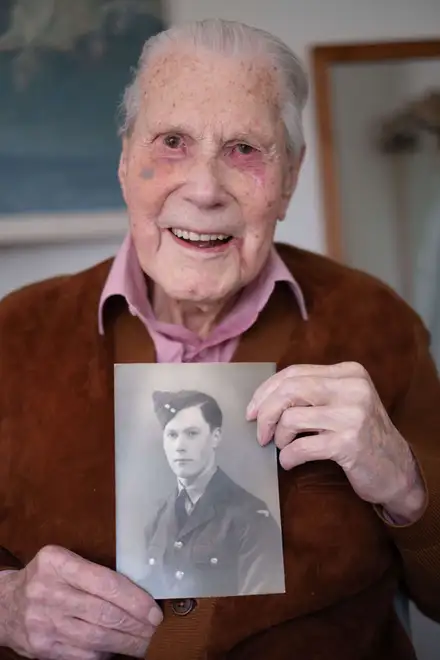
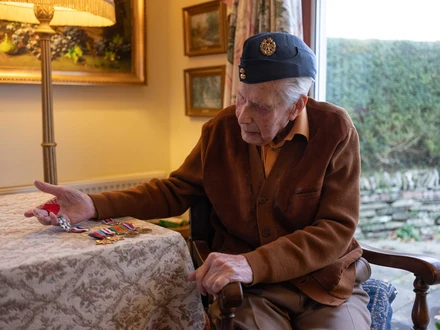
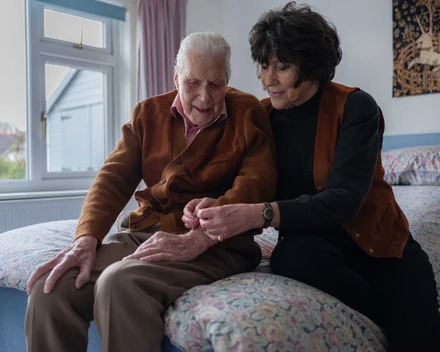
LAC (Leading Aircraftman) John Westlake
Fitter/Armourer, RAF
While the infantry were taking the fight to the enemy, thousands of others each had their own dedicated role behind the fighting line. Without them, the invasion could never have succeeded. One such man was 19-year-old Leading Aircraftsman John Westlake.
His job was crucial: arming, repairing and maintaining the weapons of each aircraft in his charge. John oversaw a team and a workshop lorry that followed the front line at forward airbases, all the way through Normandy and beyond. At the airbases
they were responsible for four or five aircraft as well as scavenging operations to retrieve usable spares, and ammunition, from crashed planes.
“[The] Typhoon, that was a terrific aircraft, it was known as the ‘Tank Buster’ and the pilots were exceptionally brave as they had to fly so low. It's so easy to work on. The guns were four cannons, and they were nice, big, bulky guns.
“In those days we knew we had to do our work and keep the momentum going, and we were working solidly. Of course, we lost more pilots than groundcrew and we were not [as] familiar with the pilots, so it was any groundcrew losses we noticed more.
“It was something we tended to accept as part of everyday life, someone not coming back… In a way I suppose we had like a gallows humour to cope with it, and we got a bit thick skinned about it I suppose, by way of survival and sanity. You couldn’t afford to think about it, glad it wasn’t you really. The worst was when we had to clear out the remains of the air gunners and hose down and repair the capsule, ready for the next gunner. That was grim.”
John followed the front line through Falaise, Rouen, Lille, Brussels and into the Netherlands. On VE Day he had just crossed the Rhine. He decided to sign on for an additional six months in the RAF before being demobbed in 1947.
Lieutenant John Gillespie
Royal Engineers
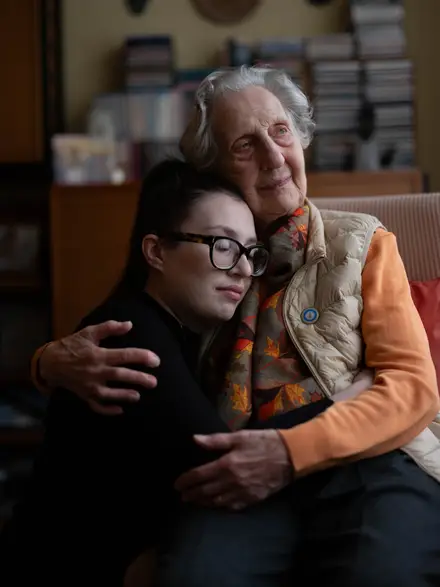
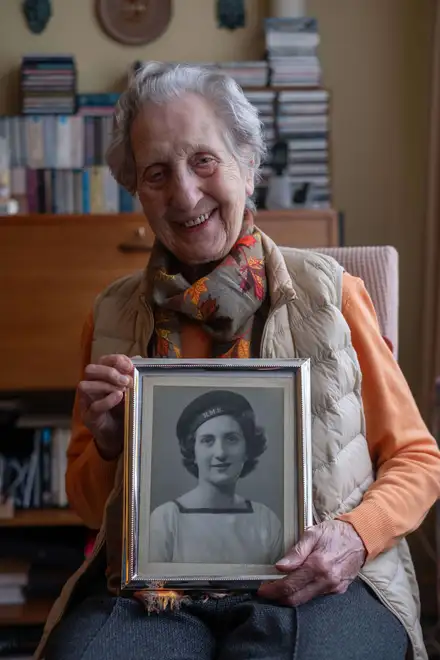
Wren Marie Scott
Women’s Royal Naval Service
Marie volunteered for the Women’s Royal Naval Service in February 1944 when she was 17. She was already a trained switchboard operator and was posted to Fort Southwick – the secret underground operations centre which coordinated the D-Day landings on the beaches. It was here that she was trained as a radio operator.
“On D-Day I was on duty in Fort Southwick, deep underground, and I was transmitting and receiving messages. Suddenly, in my earphones, I was on the beaches in Normandy. I heard everything, because they were the troops who were landing on the beaches. For a moment I was a bit bemused. I didn't know quite what was happening. I had the sounds of war in my ears: machine gun fire, cannon fire, bombs, men shouting orders, men screaming. All those sounds. I suppose, really, you could sum it up by saying it was the chaos of war.
Having got over the initial shock, I then started doing what I was there for: transmitting messages, but it was horrifying. I suddenly thought, all those young men, they don't know what they're going into.
I was on duty for 24 hours over D-Day… I remember when we eventually surfaced. Portsmouth Harbour was empty. Nothing there. All the ships had gone.”
Marie remained a Wren for over two years before demob in July 1946. She has two daughters and three grandchildren.
Stoker 1st Class JOSEPH BUTTERY
Royal Navy

